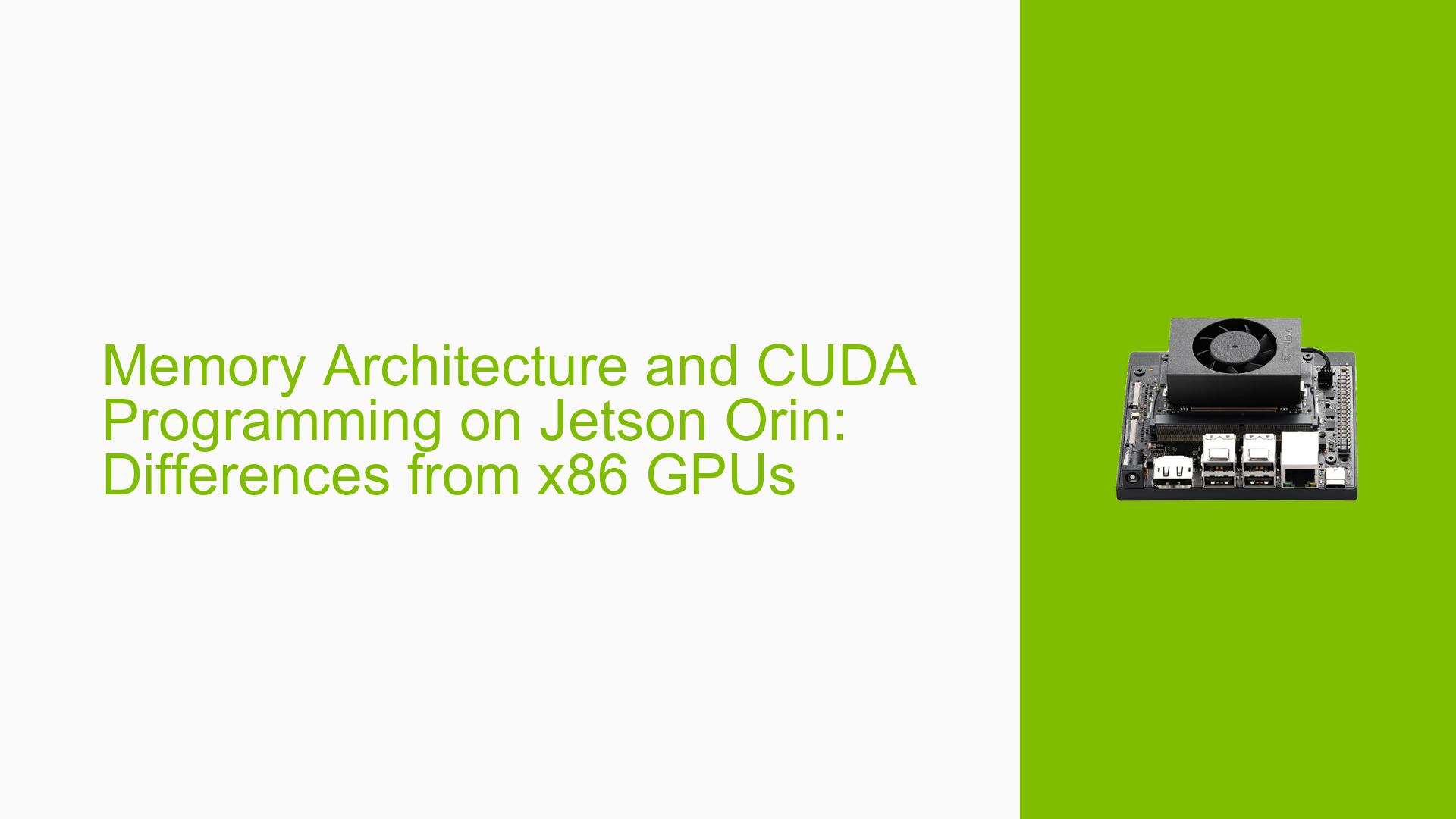Memory Architecture and CUDA Programming on Jetson Orin: Differences from x86 GPUs
Issue Overview
Users transitioning from CUDA programming on x86 architectures to System-on-Chip (SoC) platforms like the Nvidia Jetson Orin are encountering challenges due to differences in memory architecture. The main points of confusion include:
- Understanding the memory structure in Arm-based GPUs compared to x86 GPUs
- Uncertainty about the existence of special memory units (local, global, shared) on SoC platforms
- Implementing efficient memory management techniques like zero-copy on Jetson devices
- Adapting CUDA programming practices for SoC environments
The issue impacts developers’ ability to optimize CUDA programs for Jetson Orin and utilize its unique hardware capabilities effectively.
Possible Causes
-
Architectural Differences: The integrated nature of CPU and GPU on SoC platforms like Jetson Orin creates a fundamentally different memory architecture compared to discrete GPUs in x86 systems.
-
Shared Memory Pool: Unlike x86 systems with separate CPU and GPU memory, Jetson Orin has a shared internal memory for both CPU and GPU, which can lead to confusion about memory allocation and management.
-
Limited Documentation: Lack of comprehensive guidelines or code examples specifically tailored for Jetson devices may contribute to the difficulty in understanding and implementing efficient CUDA programs on these platforms.
-
Misconceptions about Memory Types: Users may incorrectly assume that special memory units (local, global, shared) don’t exist or function differently on SoC platforms, leading to suboptimal code.
Troubleshooting Steps, Solutions & Fixes
-
Understand the Shared Memory Architecture:
- Recognize that while the CPU and GPU share the same physical memory on Jetson Orin, the CUDA programming model remains consistent.
- Be aware that CPU memory allocations will impact the available memory for the GPU due to the shared memory pool.
-
Utilize Unified Memory and Page-Locked Memory:
- Implement unified memory and page-locked memory techniques, which are available on Jetson devices, to optimize memory usage.
- Example code for using unified memory:
__global__ void kernel(int* data) { // Kernel code here } int main() { int* data; cudaMallocManaged(&data, size); kernel<<<blocks, threads>>>(data); cudaDeviceSynchronize(); // Use data on CPU cudaFree(data); return 0; }
-
Implement Zero-Copy Techniques:
- Use zero-copy memory to reduce memcopy operations and improve performance.
- Example of zero-copy implementation:
int* h_data; cudaHostAlloc(&h_data, size, cudaHostAllocMapped); int* d_data; cudaHostGetDevicePointer(&d_data, h_data, 0); // Use d_data in kernel launches // Access h_data directly on the host
-
Consult Jetson-Specific Documentation:
- Refer to the NVIDIA documentation "CUDA for Tegra" for detailed information on memory types and considerations specific to Jetson devices.
- Access the document at: CUDA for Tegra 72
-
Optimize Memory Management:
- Be mindful of the shared memory pool when allocating memory for both CPU and GPU operations.
- Use
cudaMallocManaged()for allocations that will be accessed by both CPU and GPU to leverage unified memory.
-
Leverage EGL Interoperability:
- Explore EGL interoperability features mentioned in the CUDA for Tegra documentation to optimize graphics-related operations.
-
Profile and Benchmark:
- Use NVIDIA’s profiling tools to analyze memory usage and identify bottlenecks specific to the Jetson platform.
- Compare performance metrics between x86 and Jetson implementations to fine-tune optimizations.
-
Stay Updated:
- Regularly check NVIDIA’s developer forums and documentation for new best practices and optimizations specific to Jetson devices.
- Participate in community discussions to share experiences and learn from other developers working on similar challenges.
By following these steps and leveraging the unique features of the Jetson Orin platform, developers can effectively transition their CUDA programming skills from x86 to SoC environments and create optimized applications for Jetson devices.
